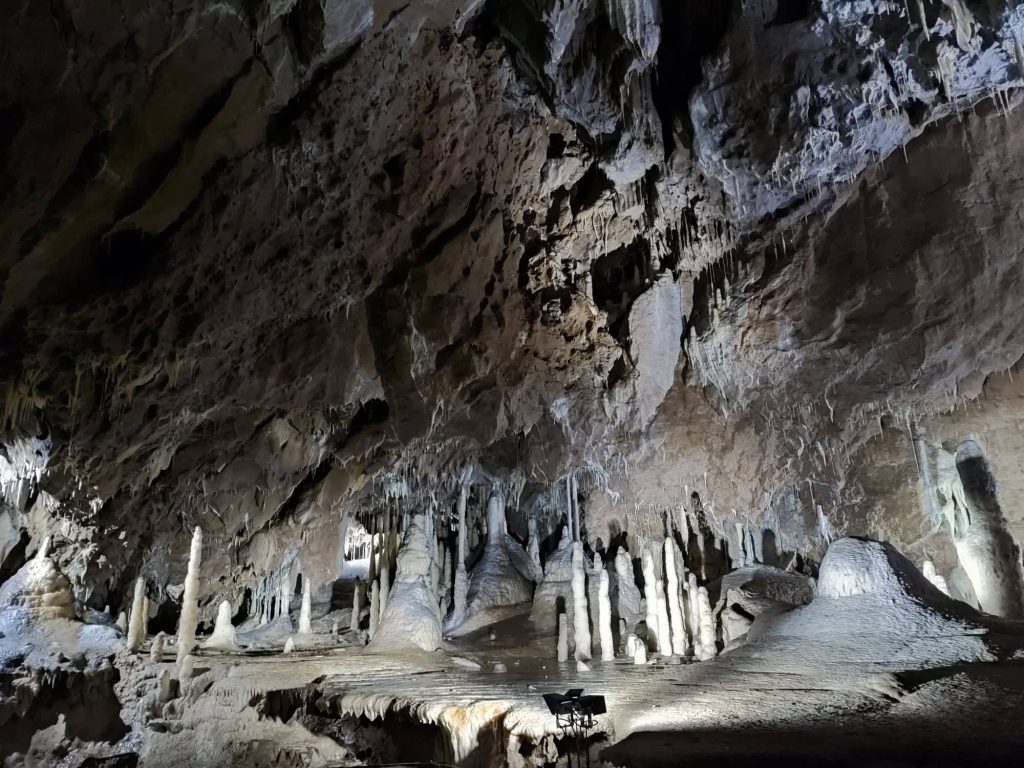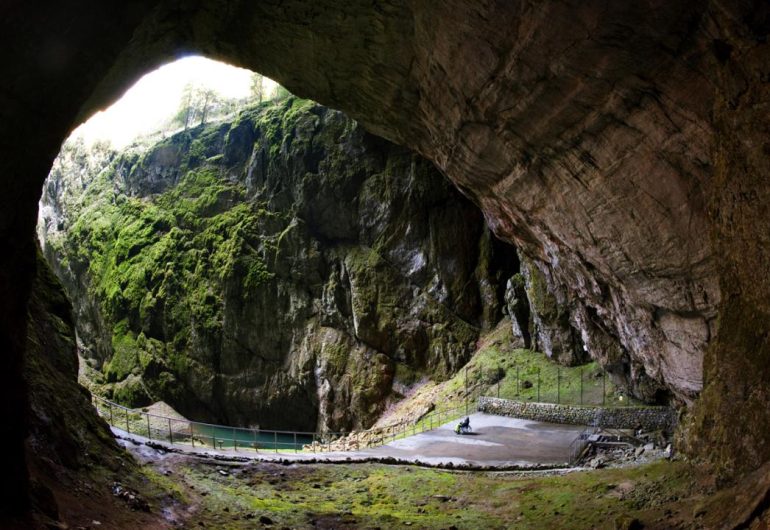The Czech Republic currently has only one natural heritage site on the UNESCO World Heritage List: the Jizera Mountains Beech Forests. Experts are now working on preparations to add another natural landmark to the list: the unique Punkva Cave, with the Macocha Abyss and the Kateřinská Cave, located in the central part of the Moravian Karst Protected Landscape Area.
“The Moravian Karst Protected Landscape Area is living proof of what diverse and unique natural beauty we can discover and admire in our country,” said Czech Environment Minister Petr Hladík (KDU-ČSL). “The Punkva Caves with the Macocha Abyss and the Kateřinská Cave are an absolutely unique environment that clearly deserves to be listed on the UNESCO list. The level of protection here meets the parameters for us to apply for inclusion on the World Heritage List. The underground is made up of a tangle of mysterious caves and abysses that provide a breathtaking spectacle.”
According to Hladík, a wide team of experts is working on the preparation of materials for the nomination, which is going ahead with support from mayors of the Moravian Karst municipalities and the Governor of the South Moravian Region. He stressed that the designation would not change anything for the municipalities and residents of the Moravian Karst Protected Landscape Area.
Both caves are located in the Vývěry Punkvy national nature reserve, which provides them with the highest possible protection status according to the Nature and Landscape Protection Act. The area is also included in the list of wetlands protected under the Ramsar Convention on Wetlands, which are of international importance primarily as waterfowl habitats, under the name Podzemní Punkva.
“The Punkva Caves are a unique tour route where visitors walk through dry cave spaces with stalactite decorations, then stand at the bottom of the abyss and from there sail on electric boats along the underground Punkva River, including the spring to the surface,” said Milan Jan Půček, director of the Czech Caves Administration (SJ ČR). “15 and probably more prehistoric drawings were found in the Kateřinská Cave, in various places in the cave spaces there, which is why we will strive to register it not only as purely natural heritage, but also among the so-called mixed sites.”
He added that the Punkva Caves with the Macochá Abyss and the Kateřinská Cave stand out in particular for their unique geological and hydrological conditions, and the interaction of those conditions.

The Macocha Abyss is probably the largest open hole in Central Europe with endemic flora. The opening of the bottom of the Macocha in 1914 made fascinating views of the Punkva Caves accessible to visitors. The route is unique in Europe – it begins with a passage through dry cave halls decorated with stalactites, continues with a descent to the bottom of a monumental karst abyss and ends with a cruise on electric boats along an almost half-kilometre section of the underground Punkva River, including its outlet to the surface.
Kateřinská Cave is unusual for its geological properties and paleontological findings, as well as the character of the archaeological site. It is a rich source of bones of Pleistocene animals, especially bears. At least 15 prehistoric charcoal drawings from about 7,000 years ago have been found on its walls. The oldest stone tools found in the cave come from the Old Stone Age, approximately 12,000 years old. Further settlement is documented by finds from the Neolithic, Bronze Age, Hallstatt period and the Middle Ages.
In addition to the Jizera Mountains Beech Forests, the Czech Republic has 16 other tangible heritage sites on the UNESCO World Heritage List, which are protected exclusively for their history and architecture. The rock towns of Český ráj are waiting on the so-called indicative list.
Cave administrators are not afraid of extreme overtourism after the possible inclusion of the caves on the list. “Of the 17 listed places, only the center of Prague and Český Krumlov are experiencing a large number of tourists. And that would probably happen even without the list. We are mainly motivated by the effort to show the rarity and interestingness of both caves. The world public, represented by UNESCO, demands that such gems be properly and thoughtfully cared for,” said Půček.
The plan does not require modification of existing legal protections, as both the caves and their surroundings are already at the highest level of protection, as the Punkva Springs National Nature Reserve. The care regime resulting from the legal protection would not change, and there would be no new restrictions.







